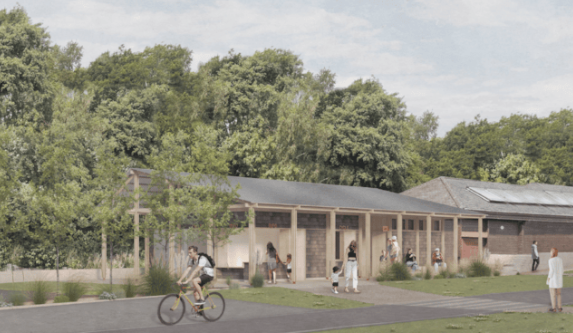
Video – Renfrewshire tourist spot set to benefit from £700,000 investment
November 19, 2025As temperatures drop and the darker months approach, winter can place additional pressure on rental properties and the tenants living in them. For landlords, preparation is key to avoiding unexpected repairs, emergency call-outs, and tenant dissatisfaction. Whether you manage a single property or a full portfolio, taking the right preventative steps now can save significant time, money, and hassle later. Local experts such as Whitegates Mansfield estate agents often emphasise the importance of early planning, and for good reason. Winter brings challenges that are entirely predictable—so it makes sense to get ahead.
Below is a detailed checklist to help landlords ensure their properties are safe, efficient, and ready for the colder months.
1. Inspect and Service the Heating System
Nothing causes tenant complaints faster than a faulty boiler in December. A full heating system inspection is one of the most vital tasks on any winter checklist.
- Book an annual boiler service with a qualified Gas Safe engineer.
- Ensure radiators are heating evenly; bleed them if needed.
- Check thermostat functionality and consider upgrading to a smart thermostat to improve energy efficiency.
- If the property has electric heaters, ensure cables and units are checked for safety.
A well-maintained heating system reduces the risk of breakdowns when demand peaks.
2. Check Insulation and Draught-Proofing
Insulation plays a significant role in keeping warmth inside while reducing energy costs for tenants.
- Inspect loft insulation to ensure it meets recommended depth.
- Check insulation around water tanks, pipework, and cylinder jackets.
- Look for draughts around doors, windows, and letterboxes, and install seals if necessary.
- Consider upgrading old windows to double glazing if the property still relies on single-pane windows.
Even small improvements can make the property far more comfortable during winter.
3. Protect Pipes to Prevent Freezing
Frozen pipes are one of the most common winter emergencies—and one of the most disruptive.
- Insulate all exposed pipes, especially in lofts, garages, and external areas.
- Ensure tenants know how to locate and operate the stopcock.
- Encourage tenants to keep heating on low if they are away for extended periods.
- Consider installing pipe insulation and frost-protection devices in risk-prone areas.
Burst pipes can cause extensive water damage, so prevention is absolutely crucial.
4. Inspect the Roof, Gutters, and Drains
Heavy rain, snow, and strong winds can quickly reveal roof weaknesses.
Roof checks:
- Look for missing, loose, or cracked tiles.
- Inspect flashing around chimneys and skylights.
- Check for signs of water ingress in the loft area.
Gutters and drains:
- Clear gutters of leaves, moss, and debris.
- Ensure downpipes are flowing freely.
- Check external drains to prevent blockages during heavy rainfall.
Maintaining proper drainage helps avoid leaks, damp issues, and structural damage.
5. Address Damp, Mould, and Ventilation Issues
Winter is prime time for condensation and mould growth, especially in older properties.
- Inspect bathrooms, kitchens, and bedrooms for early signs of mould.
- Ensure extractor fans are working efficiently.
- Consider adding trickle vents to windows if ventilation is poor.
- Provide tenants with clear guidance on reducing condensation, such as using lids while cooking and opening windows briefly each day.
Good ventilation not only protects the property but also supports tenant wellbeing.
6. Check Alarms and Safety Equipment
Safety checks are essential and legally required.
- Test smoke alarms and replace batteries if needed.
- Ensure carbon monoxide alarms are fitted where required.
- Check all alarms comply with the latest regulations.
- Inspect fire doors, emergency lighting (if applicable), and escape routes.
Winter increases heating usage, making carbon monoxide awareness especially important.
7. Assess External Areas
Outdoor hazards need attention before harsh weather sets in.
- Repair damaged pathways, steps, and handrails to reduce slip risks.
- Trim overgrown trees or branches that could fall in strong winds.
- Ensure outdoor lighting is functional, especially near entrances.
- Check the condition of garden sheds, fences, and gates.
Well-maintained external areas help tenants stay safe during icy or stormy conditions.
8. Provide Tenants with a Winter Information Pack
Clear communication can reduce emergencies and unnecessary call-outs.
Include information on:
- How to report repairs quickly.
- Boiler instructions and troubleshooting steps.
- Stopcock location and water-shutoff guidance.
- Tips for preventing condensation and frozen pipes.
- Emergency contact details for out-of-hours issues.
This empowers tenants to handle minor issues safely and efficiently.
9. Review Insurance and Emergency Contacts
Winter is the worst time to realise your insurance doesn’t cover something important.
- Review landlord insurance policies for winter-related risks.
- Keep emergency tradespeople—plumbers, electricians, roofers—on standby.
- Ensure all certificates (Gas Safety, EICR, EPC) are up to date.
Being prepared reduces stress if a sudden issue arises.
10. Plan for Long-Term Upgrades
Winter prep isn’t just about small fixes—it’s also a chance to think ahead.
- Consider energy-efficient upgrades, such as better insulation or modern heating systems.
- Plan ahead for future improvements, especially if the property struggles with damp or heat retention.
- Review the property’s overall winter performance and plan budget-friendly enhancements for spring.
Long-term planning increases property value and reduces ongoing maintenance costs.
Final Thoughts
Preparing rental properties for winter is an essential responsibility for landlords. A proactive approach not only protects your investment but also enhances tenant satisfaction and comfort. By following this checklist, you can ensure your property is safe, energy-efficient, and ready to withstand the challenges of the colder season.



